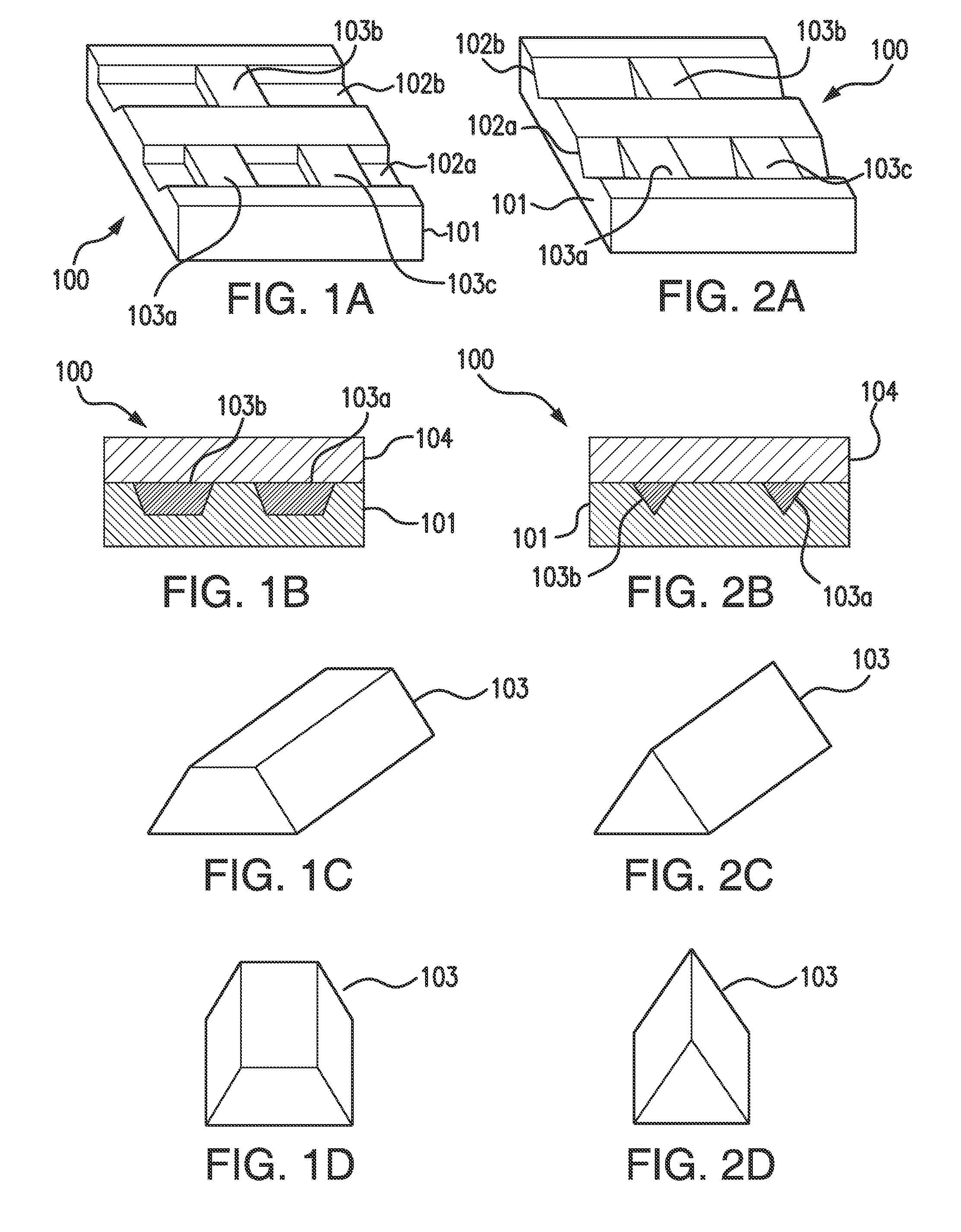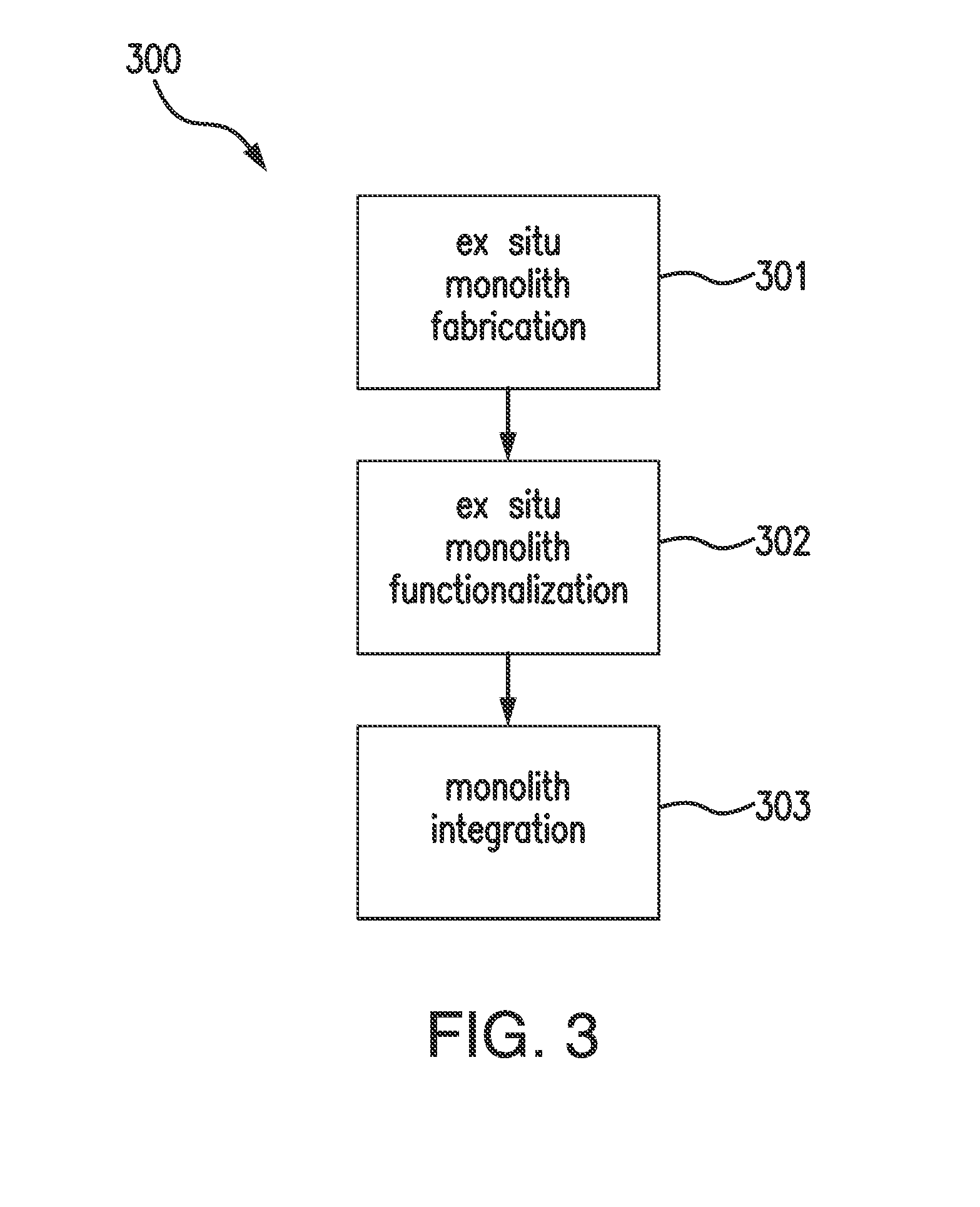Integration of ex situ fabricated porous polymer monoliths into fluidic chips
a technology of porous polymer monoliths and fluidic chips, which is applied in the manufacture of electrode systems, electric discharge tubes/lamps, mechanical vibration separation, etc., can solve the problems of limited monolith potential in microfluidic applications, significant variability in uv dose, and poor control of the resolution of the resulting monoliths, etc., to achieve enhanced processing throughput
- Summary
- Abstract
- Description
- Claims
- Application Information
AI Technical Summary
Benefits of technology
Problems solved by technology
Method used
Image
Examples
Embodiment Construction
[0075]FIG. 1A illustrates a perspective view of top, side, and end of a portion of a channel substrate 101 of a fluidic chip 100 embodying aspects of the present invention. In some non-limiting embodiments, the fluidic chip 100 may be a microfluidic chip. In some embodiments, the fluidic chip 100 may include a channel substrate 101. In some non-limiting embodiments, the channel substrate 101 may comprise a thermoplastic, such as, for example and without limitation, cyclic olefin copolymer (COC). In some embodiments, the channel substrate 101 may include one or more channels 102. In some non-limiting embodiments, the one or more channels 102 may comprise one or more microchannels. In some non-limiting embodiments, as illustrated in FIG. 1A, the one or more channels 102 of the channel substrate 101 may include a first channel 102a and a second channel 102b.
[0076]In some non-limiting embodiments, the one or more channels 102 may have a width within a range greater than or equal to 10 ...
PUM
| Property | Measurement | Unit |
|---|---|---|
| height | aaaaa | aaaaa |
| height | aaaaa | aaaaa |
| height | aaaaa | aaaaa |
Abstract
Description
Claims
Application Information
 Login to View More
Login to View More - R&D
- Intellectual Property
- Life Sciences
- Materials
- Tech Scout
- Unparalleled Data Quality
- Higher Quality Content
- 60% Fewer Hallucinations
Browse by: Latest US Patents, China's latest patents, Technical Efficacy Thesaurus, Application Domain, Technology Topic, Popular Technical Reports.
© 2025 PatSnap. All rights reserved.Legal|Privacy policy|Modern Slavery Act Transparency Statement|Sitemap|About US| Contact US: help@patsnap.com



